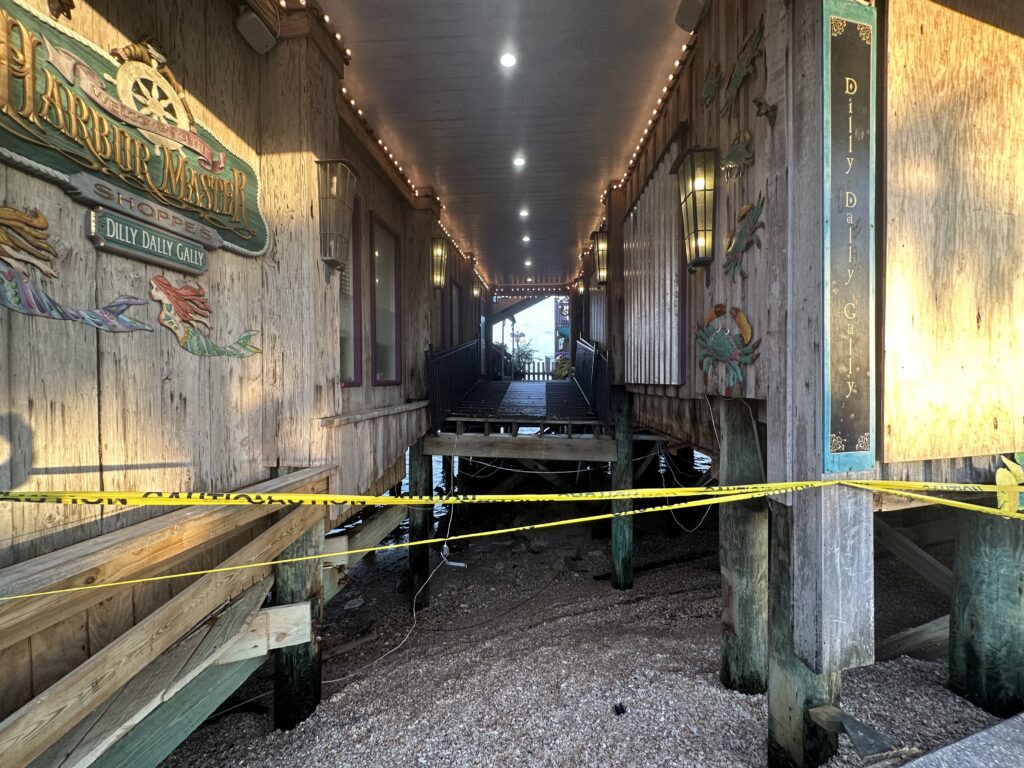On 30 August, 2023, Hurricane Idalia, a Category 4 storm made landfall in Florida, leaving a trail of destruction in its wake. Among the hardest-hit areas was the picturesque Cedar Key Island, a small coastal community that bore the brunt of the hurricane’s fury. The impact of this natural disaster serves as a stark reminder of the vulnerability of coastal regions and the urgent need for preparedness and resilience in the face of increasingly frequent and intense storms.
The island, known for its serene beauty and vibrant local culture, found itself facing a nightmare of unparalleled proportions. Residents had braced for impact, but the sheer force of the storm left even the most seasoned islanders stunned.

Cedar Key Island, though accustomed to weathering tropical storms, had rarely experienced a hurricane of this magnitude. Idalia’s ferocious winds, reaching speeds of up to 150 mph, tore through the island’s infrastructure, uprooting trees, snapping power lines, and shredding buildings apart. The coastal flooding that accompanied the storm surge inundated low-lying areas, leaving homes and businesses submerged.
The island’s vital tourism industry, which relied heavily on its idyllic coastal charm, suffered a severe blow. Iconic landmarks were marred or completely destroyed, leaving the community facing a daunting path to recovery.

While material damage was undeniable, the true extent of the tragedy lay in the emotional toll on Cedar Key’s residents. Families were displaced from their homes, businesses that had been cherished for generations were reduced to ruins, and the close-knit community found itself grappling with grief and uncertainty.
However, amidst the devastation, stories of resilience and solidarity emerged. Neighbors banded together to support one another, offering shelter, supplies, and a comforting presence. First responders worked tirelessly to rescue those trapped by floodwaters and to provide critical medical assistance. The collective spirit of the islanders shone as a beacon of hope amid the darkness.
As the storm subsided and the waters receded, the arduous task of rebuilding began. Local authorities and relief organizations mobilized resources to provide emergency aid, while state and federal agencies worked to assess the extent of the damage and provide assistance. The rebuilding process, while challenging, also presented an opportunity for Cedar Key to emerge stronger and more resilient.
Among the areas hardest hit by Hurricane Idalia’s wrath was Dock Street, the heart of Cedar Key Island’s commercial and cultural hub. Dock Street, lined with charming restaurants, vibrant bars, and quaint hotels, bore witness to the destructive force of the storm as it swept through, leaving a trail of destruction in its wake.

The bustling restaurants that once served delectable seafood and local specialties were reduced to debris, their interiors waterlogged and their outdoor seating areas devastated. Quaint hotels that had welcomed tourists with open arms were left battered and uninhabitable. Lively bars that once echoed with laughter and music stood as somber remnants of a once-thriving nightlife.
Immediate Steps Towards Rebuilding
In the aftermath of the hurricane, the island community swiftly rallied together to initiate the process of rebuilding Dock Street and its cherished establishments. Local business owners, residents, and volunteers joined forces to clear debris, salvage what they could, and begin the daunting task of assessing the damage.
Despite the heartbreak, there was an air of determination and hope as plans for immediate rebuilding were put into motion. Restaurants and bars, once synonymous with Dock Street’s vibrant atmosphere, pledged to restore their establishments to their former glory. Hotel owners expressed their commitment to providing comfortable accommodations for visitors once again.
The island’s close-knit spirit was evident as neighboring communities offered assistance and resources, reinforcing the idea that Cedar Key’s recovery was a shared endeavor. The resilience displayed in the wake of the disaster served as an inspiring testament to the island’s commitment to preserving its identity and restoring its cherished establishments.

Looking Forward: A Stronger and More Resilient Community
As Cedar Key Island begins the arduous journey of rebuilding Dock Street’s establishments, it does so with a newfound determination to fortify its structures against the forces of nature. The process of reconstruction presents an opportunity to implement more resilient building practices, integrate updated technology to mitigate damage, and create a more disaster-ready infrastructure.
The devastated restaurants, bars, and hotels will likely be reimagined to blend the island’s traditional charm with modern innovations, creating spaces that can better withstand future storms while preserving the island’s unique character. While the scars of Hurricane Idalia’s impact will undoubtedly remain for some time, the rebuilding process symbolizes the island’s unwavering spirit and its commitment to emerging from adversity stronger than ever before.
The damage inflicted by Hurricane Idalia on Cedar Key Island’s Dock Street establishments was a tragic blow to the heart of the community. However, the determination to rebuild and the immediate actions taken toward restoration underscore the resilience and unity of Cedar Key’s residents. Through collective efforts and a shared commitment to creating a more resilient future, the island community stands poised to rebuild Dock Street as a testament to its enduring spirit and strength in the face of adversity.
